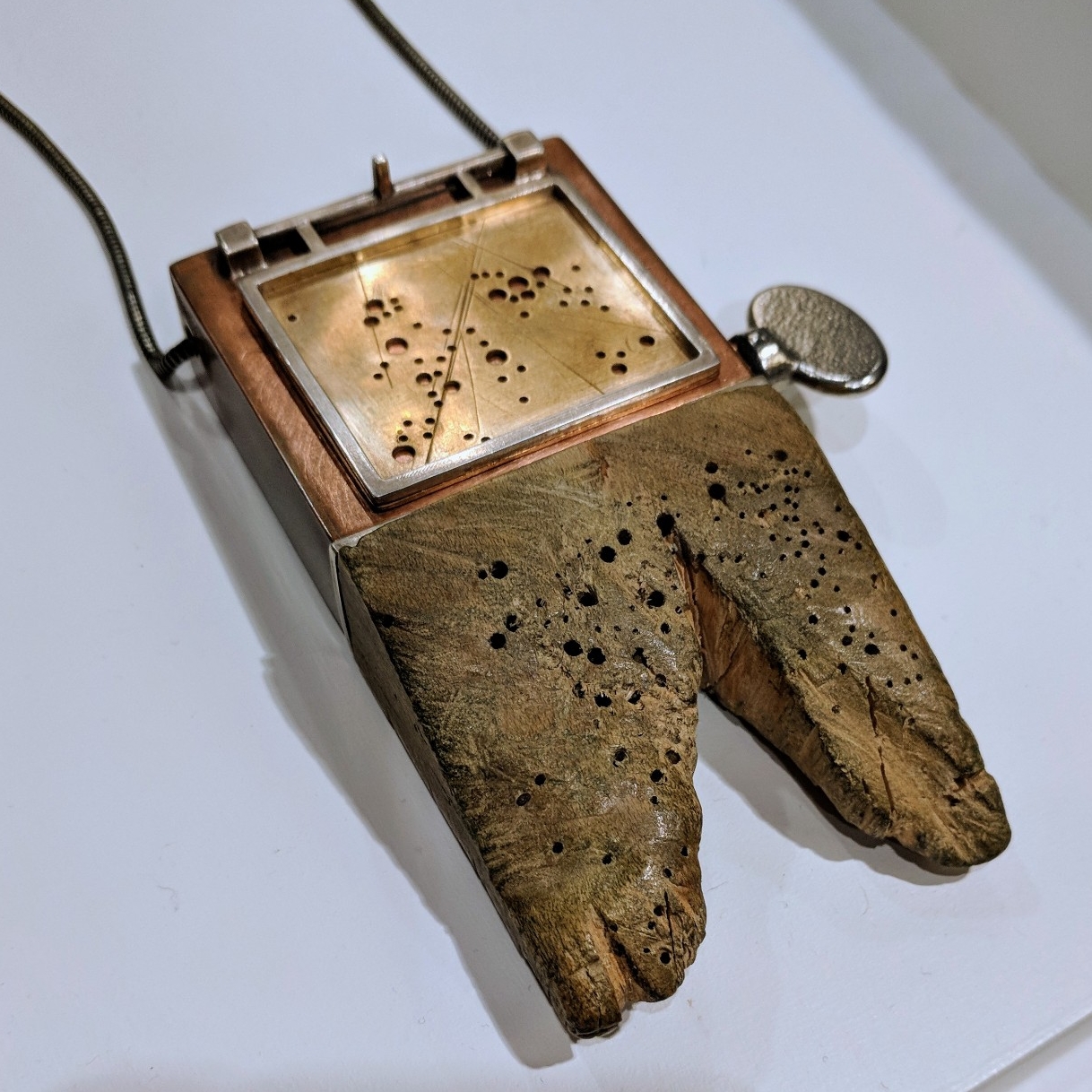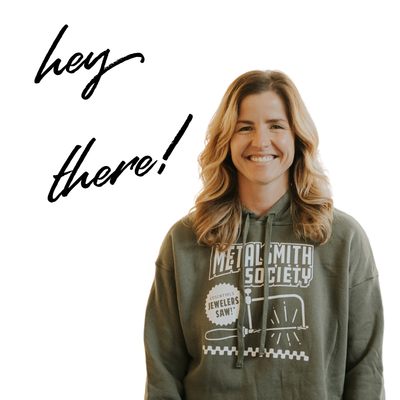HIGHLIGHTS FROM THE 2018 SNAG CONFERENCE
The following guest post was written by Lisa Cawley Ruiz, the Miami-based maker and designer behind Stellated Studio.
More than 700 attended the 2018 SNAG conference in Portland, Oregon. This year's theme, “MADE: Makers Across Disciplines Engage,” paid homage to the unique maker community and creative entrepreneurial spirit of the city. Attendees were invited to “explore the unforeseen directions, inventiveness and ingenuity within the metalsmithing field,” with a focus on “materials, art, design and interdisciplinary collaboration."
The annual Society of North American Goldsmiths (SNAG) conference isn’t as much about tools and technique as it is about bringing jewelry artists and the industry together to share, learn and connect through their craft. As the industry changes, embracing new technology, new materials and new approaches to design and production, the fundamentals of the centuries-old craft of metalsmithing unites professionals and students alike across the field.

Furniture designer and maker Vivian Beer gives the keynote presentation at the 2018 SNAG conference.

The Rio Grande booth in the vendor room at the 2018 SNAG conference had a large selection of tools on display and featured live demos.
Here are a few of the top takeaways from presenters and attendees at this year’s conference.
1. Never stop learning – No matter where you are in your career or how developed your skills are, there’s always more to learn. Take classes with different instructors and be open to trying new methods of learning. Take advantage of resources, such as books by authors like Tim McCreight and Charles Lewton-Brain; workshops at schools like Arrowmont and Jewelry Creations Workshop; websites and online communities like Ganoskin and Metalsmith Society; and organizations like SNAG and local metal arts guilds.
“Attending my first SNAG conference made me realize I am on the right path,” said Denver-based metalsmith and designer Ana Marina Sanchez, whose designs pay tribute to her Mexican heritage. “By speaking to artists and teachers, I learned about the various resources available to achieve my goals in my career and education.”
2. Push yourself – Get outside your comfort zone, experiment and grow. Challenge yourself with new techniques, new tools and new materials. Work in a different scale or explore a different theme.
Keynote speaker Vivian Beer, a modern furniture designer and maker who works primarily in metal, has made a point of pushing her personal limits with each new series she creates. “If you’re not challenging yourself, you get bored. And if you’re bored, your work gets a little less shiny,” she said. “In general, if I am worried that something would not work out or I haven’t done it before, then that is probably the way I should go.”
"Don’t ever steal from yourself,” said Thomas Gentille, who spoke about his 60-year career as a craftsman and jewelry artist during an onstage interview with Joyce Lovelace, contributing editor for American Craft magazine. "Always keep moving forward,” he said, “even if it’s just a little bit each time.”
3. Remember the wearer –The difference between jewelry and sculpture is that jewelry is meant to be worn. Don’t forget about the relationship between the piece you are making and the person who will wear it. Think about how it will move, and how it will feel against the skin when it’s on. Think about the interaction and the experience you are creating.
"I love making, wearing and seeing other people wear jewelry,” said nine-time SNAG conference attendee, Louise Perrone, a jewelry and textile artist and educator based in Vancouver, B.C. I like jewelry more than any other art form. I think it's the wearability and performance that I enjoy.”
Jewelry artist and woodworker Peter Antor, who spoke during the Early Career Artists session, likes to design pieces in a way that encourages the viewer to further explore and interact with the work. For example, some of his pieces draw you in with with hidden color on the inside, visible only when viewed up close through tiny openings. Other pieces incorporate mechanisms that open to reveal another layer of detail and complexity to the piece.
4. Don’t underestimate photography – Take care with the details, not only in your craft, but also in how you present it. Invest in high-quality photos of your work, and be sure to show your pieces on their own as well as on a person.
When he was creating his book series highlighting jewelry by different artists, Nicolas Estrada realized how important it is to show the pieces worn on the body. Jewelers tend to fall in love with their creations and only think about the piece itself, he said, but customers want to see it on. A jeweler, maker, educator and author, Estrada presented at the SNAG conference about the paths he has taken during his artistic journey and the lessons he has learned along the way. In particular, his book project allowed him to really focus on photography. “Photographs are so important, and sometimes jewelers don’t put enough time and attention into it. They don’t think about it until the end, maybe they do it themselves, and it doesn’t always work out. Sometimes the photos don’t properly reflect the beauty of the piece,” he said.
5. There are many paths to success – While many artists and jewelers work in traditional materials and learn the craft the customary way (e.g., training as a bench jeweler or pursuing an arts degree), others take a less conventional path. Likewise, some approach their work primarily from an artistic or experiential perspective, incorporating unique materials or fabrication methods, while others are more focused on the commercial aspects of production, producing more traditional, popular designs in precious stones and metals.
"It is always eye-opening to be able to connect with those who share interests and yet have radically different perspectives and approaches to their work,” said Holland Houdek, who was invited to speak at the 2017 conference as a top emerging artist. Houdek has exhibited around the world and won numerous awards for her work, which focuses on medical implants, the body, and embodied experience.
Jewelry artist and educator Tabitha Ott focuses her work on repurposing waste, creating fun, wearable art from colorful discarded plastic, including disposable cutlery, birth control pill cases and toys. Craftsman and metal artist Thomas Campbell worked as industrial steel fabricator for seven years at his family’s 130-year-old steel business before moving from industry to the arts and starting a residency at Penland School of Crafts, where he has been exploring form, function and mechanism, with an industrial eye for design.
Katja Toporski transitioned from a career as a doctor to a career as a jewelry artist, which has taken her around the world and led her to explore “the mystery of birth and death,” and experiment with developing methods to capture the essence of water and other natural elements. “The paths we take are meandering and fortuitous, and sometimes if we’re lucky, they perhaps cross over with the paths we’ve had before,” she said.
6. Find what moves you – Inspiration is all around us, if we are open to it. Sometimes it comes in the form of nature, architecture, or travel. Sometimes it comes from playing with new tools or materials. And sometimes it comes from other artists.
"My top takeaway was the talk that Nick Dong gave and seeing his awe-inspiring work,” said jewelry artist Charity Poole, who incorporates natural elements, including deer antlers into her pieces. "It was so moving to hear about his inspiration for his exhibits and to see the magnificence with which he executed them. It sparked a lot more of my creative drive."
JacQueline Sanchez, whose unique designs incorporate diamonds and Lego pieces, was inspired by meeting other jewelers and talking about how they do business, learning from the presenters, and of course, “Seeing new tools from the vendors was very helpful!”
7. The industry is changing – Technologies like CAD/CAM are changing the way that jewelry artists design and create their work. Several artists discussed how they are using 3D scans, 3D design and 3D printing to make their design and fabrication processes more efficient, more economical, more automated or just to expand the possibilities of what they can create. It’s an exciting time, with rapid changes and the juxtaposition between these new tools and centuries-old tools and techniques.
Beer talked about how she has embraced CAD – not because it makes things easier, she said, but because you can make things more complicated.
Jeweler, artist and designer Caitlin Skelcey, who presented during the Early Career Artists session, discussed how she uses 3D design to create plastic prosthetics as jewelry. She is “anchored in a love for process and tactile material knowledge, where 3D printing technology and traditional adornment and craft practices are fused.”
8. Embrace your craft – While there’s no doubt technological advances are going to continue to have a significant impact on the field, some artists have mixed feelings about the shift.
Lucy Barna, the metalsmith and jewelry designer behind Votive Designs, explained that while she felt inspired by the new tools and methods discussed at the conference, she also felt saddened to see the “heart of the industry slipping away a bit” as it makes room for new advances. Mostly, however, she simply felt grateful for the ability to create and the choices she has made to always fabricate by hand in the traditional techniques, raising the metal with hammers and forming tools, sawing the shapes out one at a time, and soldering the connections meticulously. After the conference, she said she felt reconnected to exactly why she handcrafts each piece, and why it makes a difference in her work and to the person who wears it. “I am dedicated, more than ever before, to honoring my craft and having my hands and mind be part of all processes from initial idea to final polished product,” Barna said. “There are many ways to make things, and no preference is better than another – this is important to remember. But handcrafting – that's the heart of it all for me.”
9. Find your tribe – Ultimately, the opportunity to connect with the community and the sense of belonging that offers, is what keeps many people coming back to the SNAG conference year after year.
"As a first time attendee, my top takeaway was seeing and engaging in a live conversation in the world of art jewelry, and feeling I have a lot to contribute to this conversation, and world,” said artist Yael Magnes, who is based in Brooklyn, NY, and is originally from Israel.
"These people really are my tribe,” said Louise Perrone.

Lisa Cawley Ruiz (left) and Gwynne Rukenbrod Smith in Portland for the 2018 SNAG conference.

The Adorned Spaces exhibition at the 2018 SNAG conference featured work by Jewelry Edition artists, including Tabitha Ott.

"Benchpin Reliquary" by Peter Antor at the Adorned Spaces exhibition.
Visit the SNAG website for more information on its annual conference, which will be held in Chicago in May 2019 to mark the organization’s 50th anniversary.
Huge shoutouts to Lisa for sharing her experiences at SNAG with us!
Follow her @stellatedstudio
Lisa Cawley Ruiz is the maker and designer behind Stellated Studio handcrafted jewelry and a marketing communications professional based in Miami, FL. You can reach Lisa at lruiz@stellatedstudio.com.
All photos courtesy of Lisa Cawley Ruiz
SUPPORT METALSMITH SOCIETY
You can support Metalsmith Society by joining our Instagram community, sharing our posts on social media, and/or pinning this article to Pinterest! Thank you so much for your support!

